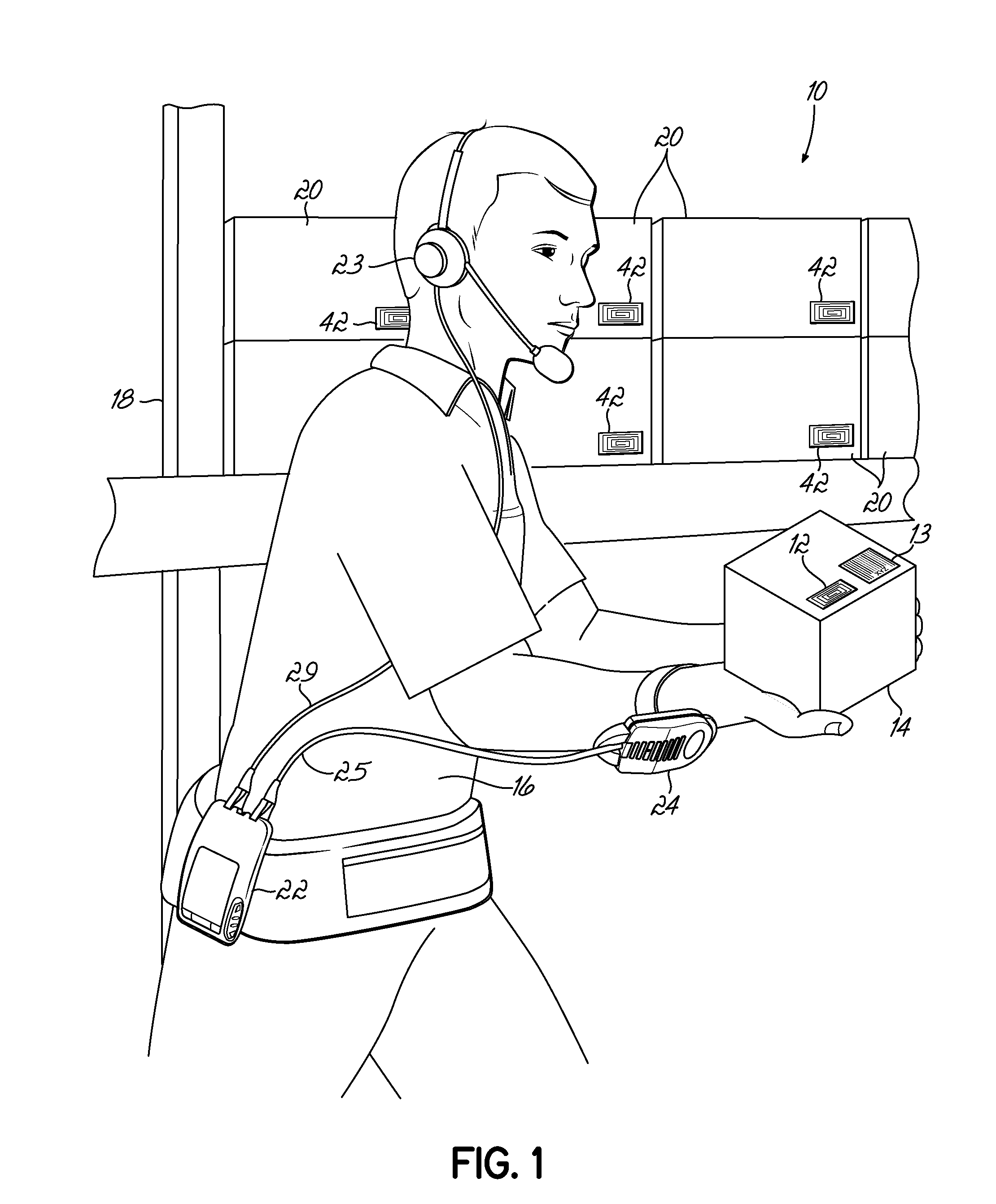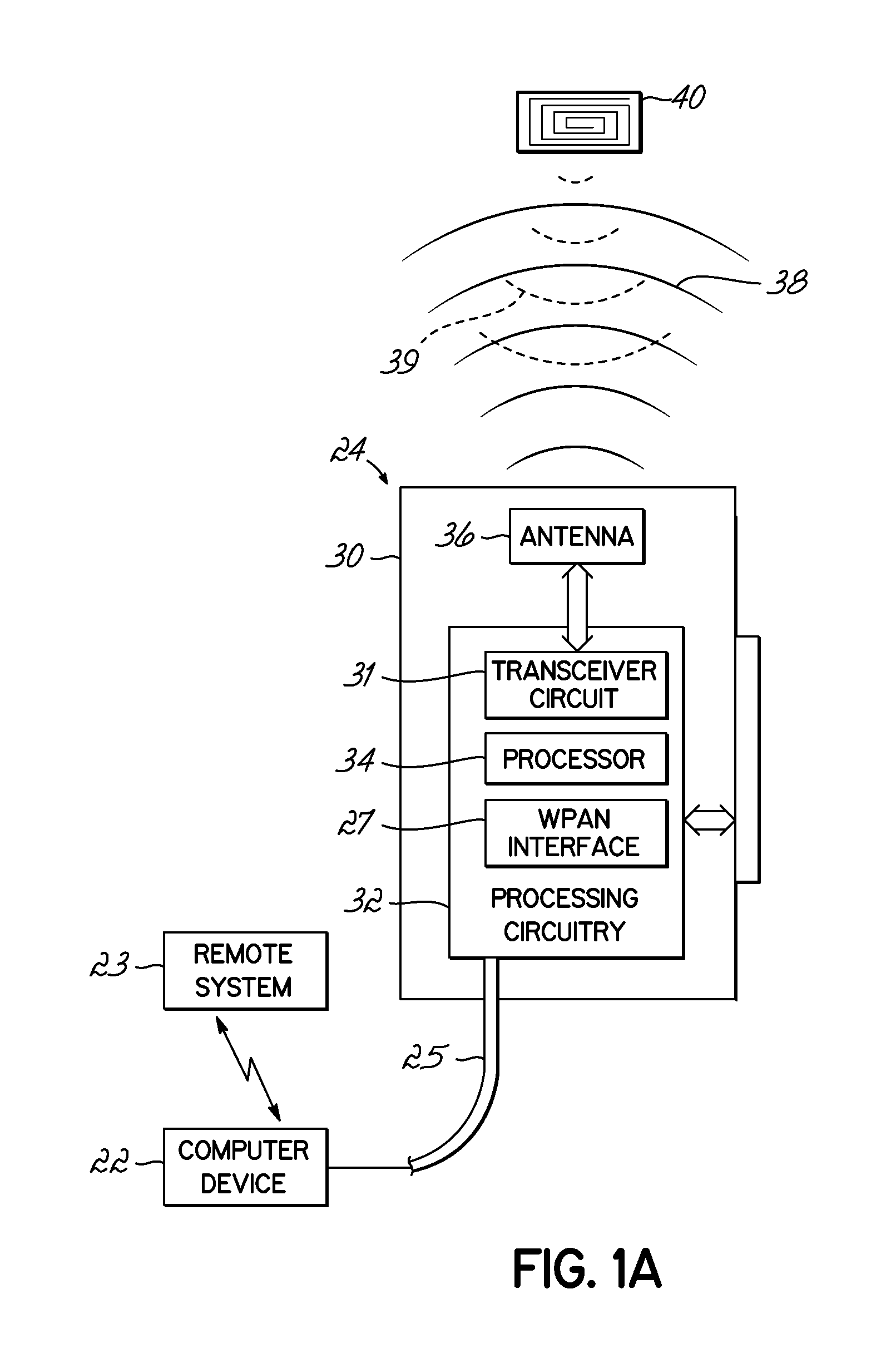Method and system for correctly identifying specific RFID tags
a radio frequency identification and correct identification technology, applied in the field of radio frequency identification systems, can solve the problems of difficult to achieve, difficult to read the code, etc., and achieve the effect of avoiding the problem of non-directivity to the rfid scan
- Summary
- Abstract
- Description
- Claims
- Application Information
AI Technical Summary
Benefits of technology
Problems solved by technology
Method used
Image
Examples
example a
[0041]In the first case, the first individual scan at step 101 of the control algorithm 100 reports the following information: Tag A was detected with an RSSI value of 100 and a Times Read value of 20, while Tag B was detected with an RSSI value of 80 and a Times Read value of 5. At step 104, the RSSI values are normalized by dividing each RSSI value by the maximum RSSI value, which is 100 in this example. Therefore, the normalized RSSI values are 1.0 and 0.8. At step 105, the Times Read values are also normalized by dividing each Times Read value by the maximum Times Read value, which is 20 in this case. Therefore, the normalized Times Read values are 1.0 and 0.25. These steps provide Tag A with a normalized RSSI of 1.0 and a normalized Times Read of 1.0, and Tag B with a normalized RSSI of 0.8 and a normalized Times Read of 0.25. At steps 106 and 107, the normalized values are further emphasized by multiplying them by the respective RSSI multiplier and Times Read multiplier. This ...
example b
[0042]In the second case, the first individual scan at step 101 of the control algorithm 100 reports the following information: Tag A was detected with an RSSI value of 100 and a Times Read value of 20, while the next highest tag, Tag B, was detected with an RSSI value of 80 and a Times Read value of 10. At step 104, the RSSI values are normalized by dividing each RSSI value by the maximum RSSI value, which is 100 in this case. At step 105, the Times Read values are normalized by dividing each Times Read value by the maximum Times Read value, which is 20 in this case. These steps provide Tag A with a normalized RSSI of 1.0 and a normalized Times Read of 1.0, and Tag B with a normalized RSSI of 0.8 and a normalized Times Read of 0.5. At steps 106 and 107, the normalized values are emphasized by multiplying them by the respective RSSI multiplier and Times Read multiplier. This provides Tag A with an RSSI score of 0.8 and a Times Read score of 1.2, while Tag B has an RSSI score of 0.64...
PUM
 Login to View More
Login to View More Abstract
Description
Claims
Application Information
 Login to View More
Login to View More - R&D
- Intellectual Property
- Life Sciences
- Materials
- Tech Scout
- Unparalleled Data Quality
- Higher Quality Content
- 60% Fewer Hallucinations
Browse by: Latest US Patents, China's latest patents, Technical Efficacy Thesaurus, Application Domain, Technology Topic, Popular Technical Reports.
© 2025 PatSnap. All rights reserved.Legal|Privacy policy|Modern Slavery Act Transparency Statement|Sitemap|About US| Contact US: help@patsnap.com



